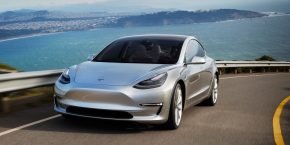
We compare one of the very first Tesla Model 3s without a heat pump to a newer model with one. The latter shows impressive initial results with what appears to be about twice the efficiency when running the heater.
With the launch of the Model Y earlier this year, Tesla introduced its own heat pump design.
It moved away from the resistive heater, which uses a heating element that converts electrical energy into heat, in the Model 3, the Model Y’s sister vehicle.
A heat pump system has the potential to be much more efficient, resulting in a longer range.
Elon Musk said that the Tesla Model Y heat pump is “some of the best engineering he has seen in a while.”
It took a few months, but Tesla brought the heat pump to the Model 3 with the 2021 refresh.
Now the first batch of new 2021 Tesla Model 3 vehicles have been delivered, and YouTuber Bjorn Nyland did a comparison test with his 2019 Tesla Model 3, which doesn’t have a heat pump:
He let the heat run in both cars for several hours at 21C (70F) to see how much of a difference the heat pump made.
Based on his test, he concluded his 2019 Model 3 without the heat pump required 2,170 watts to maintain the temperature. The new 2021 Model 3, on the other hand, needed only 735 watts.
That’s about three times more efficient.
Electrek’s Take
Interesting test and results, and props to Bjorn for running the test. However, I think there’s a bit of a mistake.
He got good readings on his own cars since he had access to the battery data through his third-party app. But he didn’t have access to the same data on the new Model 3.
For the Model 3 with the heat pump, he instead used the percentage of the state of charge and assumed a usable capacity of 73 kWh.
However, we have been getting reports that the new Long Range Model 3 has a bigger battery capacity.
We are talking about 5% bigger, so it wouldn’t change the results too much.
The new heat pump is certainly more efficient. But I believe it could be closer to twice as efficient, which is still impressive.
We are going to need more tests in the future. I am particularly interested to see how it performs in much colder weather in the coming months.
What do you think? Let us know in the comment section below.
FTC: We use income earning auto affiliate links. More.





Comments